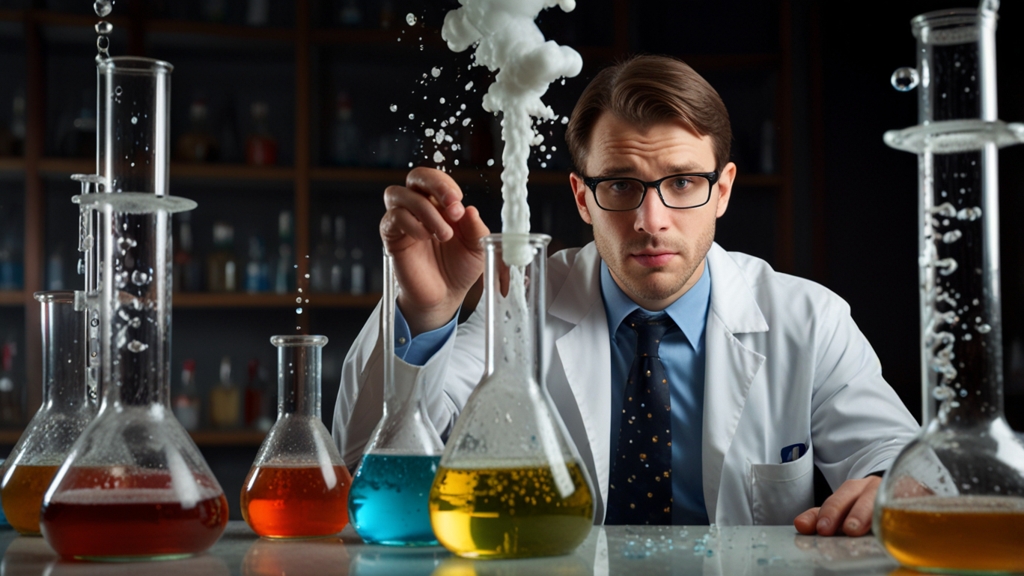Epic Failures in Chemistry: When Experiments Go Terribly Wrong
Chemistry is a double-edged sword. On one side, it has paved the way for incredible advancements in medicine, technology, and various industries. On the other, the volatile nature of chemical reactions sometimes leads to catastrophic failures. These epic missteps serve as cautionary tales and remind us of the inherent risks associated with scientific exploration. Here, we'll delve into some of the most notable, disastrous events in the history of chemistry.
The Tragic Tale of Marie Curie's Radium
Marie Curie is celebrated for her pioneering work in radioactivity, but her groundbreaking research came with a grave cost. In the early 20th century, Curie discovered radium and polonium, leading to unprecedented developments in medical treatment and scientific understanding. However, the hazard of radioactive materials was poorly understood at the time. Curie and her husband handled radium with no protective gear, often carrying it in their pockets. Tragically, Marie Curie succumbed to aplastic anemia, a condition caused by prolonged exposure to high levels of radiation.
“We must not forget that when radium was discovered no one knew that it would prove useful in hospitals. The work was one of pure science. And this is a proof that scientific work must not be judged from the practical point of view.” - Marie Curie
The Bhopal Disaster
One of the most harrowing chemical accidents occurred on the night of December 2-3, 1984, in Bhopal, India. A Union Carbide pesticide plant released 40 metric tons of methyl isocyanate (MIC) gas, exposing more than half a million people to its toxic fumes. The immediate death toll was over 3,000, with estimates of 15,000-20,000 related fatalities over the years. Survivors continue to suffer severe health consequences, including respiratory issues, birth defects, and cancers. The Bhopal disaster stands as a bitter lesson on the importance of stringent safety protocols and corporate responsibility.
The Explosive Mistake of Sir Humphry Davy
Sir Humphry Davy, a renowned British chemist of the early 19th century, is best remembered for his discoveries of several alkali and alkaline earth metals. However, one of his experiments took a perilous turn. Davy was experimenting with a substance known as 'fulminating silver,' a highly volatile compound created from dissolving silver in nitric acid and precipitating with alcohol. During one fateful demonstration, the compound exploded, leading to a severe injury that left Davy temporarily blinded. This incident underscores the unpredictable nature of chemical research.
The Texas City Disaster
On April 16, 1947, a French cargo ship carrying ammonium nitrate caught fire while docked at the Port of Texas City. The subsequent explosion is considered one of the deadliest industrial accidents in U.S. history. The blast killed at least 581 people and injured thousands more. The sheer force of the explosion resulted in a massive 15-foot tidal wave that flooded nearby areas, causing further devastation. This tragedy highlighted the hazardous potential of transporting and storing industrial chemicals, leading to more rigorous safety regulations.
“The fire in Texas City, Texas, quickly grew to monstrous proportions, spewing great clouds of black, suffocating smoke over the waterfront.” - Eyewitness account
Conclusion
As we push the boundaries of scientific knowledge, it's crucial to remember the lessons embedded in these catastrophic events. The pursuit of chemical innovation must always be tempered with rigorous safety protocols and ethical considerations. Through understanding and learning from past failures, we can evolve into more cautious and responsible stewards of science, ensuring that future advancements benefit humanity without incurring such devastating costs.











